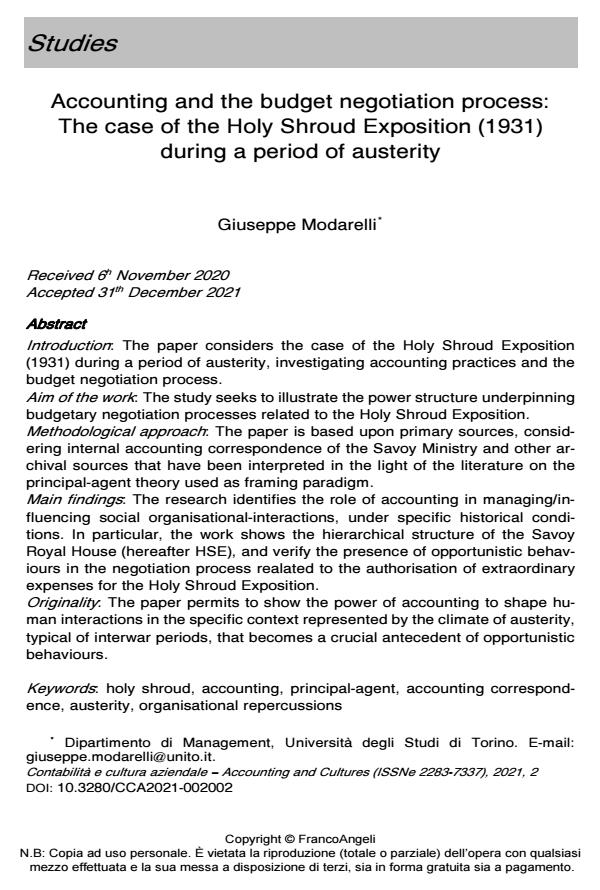Accounting and the budget negotiation process: The case of the Holy Shroud Exposition (1931) during a period of austerity
Journal title CONTABILITÀ E CULTURA AZIENDALE
Author/s Giuseppe Modarelli
Publishing Year 2022 Issue 2021/2
Language English Pages 47 P. 7-53 File size 248 KB
DOI 10.3280/CCA2021-002002
DOI is like a bar code for intellectual property: to have more infomation
click here
Below, you can see the article first page
If you want to buy this article in PDF format, you can do it, following the instructions to buy download credits

FrancoAngeli is member of Publishers International Linking Association, Inc (PILA), a not-for-profit association which run the CrossRef service enabling links to and from online scholarly content.
Introduction: The paper considers the case of the Holy Shroud Exposition (1931) during a period of austerity, investigating accounting practices and the budget negotiation process. Aim of the work: The study seeks to illustrate the power structure underpinning budgetary negotiation processes related to the Holy Shroud Exposition. Methodological approach: The paper is based upon primary sources, considering internal accounting correspondence of the Savoy Ministry and other archival sources that have been interpreted in the light of the literature on the principal-agent theory used as framing paradigm. Main findings: The research identifies the role of accounting in managing/influencing social organisational-interactions, under specific historical conditions. In particular, the work shows the hierarchical structure of the Savoy Royal House (hereafter HSE), and verify the presence of opportunistic behaviours in the negotiation process realated to the authorisation of extraordinary expenses for the Holy Shroud Exposition. Originality: The paper permits to show the power of accounting to shape human interactions in the specific context represented by the climate of austerity, typical of interwar periods, that becomes a crucial antecedent of opportunistic behaviours.
Keywords: holy shroud, accounting, principal-agent, accounting correspondence, austerity, organisational repercussions
Giuseppe Modarelli, Accounting and the budget negotiation process: The case of the Holy Shroud Exposition (1931) during a period of austerity in "CONTABILITÀ E CULTURA AZIENDALE" 2/2021, pp 7-53, DOI: 10.3280/CCA2021-002002